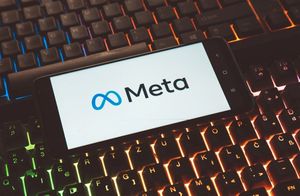
The artificial intelligence sector is currently experiencing an unprecedented surge in investment, fueled by widespread enthusiasm for its transformative potential. Billions of dollars are pouring into AI startups and established tech giants alike, driving valuations to dizzying heights. However, this fervent activity has led many experts and financial institutions to issue stark warnings, drawing parallels to historical speculative manias and raising the critical question: is the AI bubble about to burst?
This intense period of capital inflow, particularly in generative AI, has seen private investment in AI reach record highs, with a significant portion of venture capital now directed towards AI-driven solutions. While the innovation is undeniable, a growing chorus of voices, including prominent figures in the tech world and financial markets, are cautioning that the current pace of investment may be unsustainable, pointing to a disconnect between sky-high valuations and tangible returns. The implications of such a burst could be profound, reshaping the AI industry and potentially impacting the broader global economy.
The Unprecedented Surge and Ominous Indicators
The current investment landscape in AI is marked by a staggering influx of capital. Private AI investment surged to an astounding $252.3 billion in 2024, marking a 26% growth year-over-year. Within this, generative AI funding alone skyrocketed to $33.9 billion in 2024, an 18.7% increase from 2023 and over 8.5 times the levels seen in 2022. This sub-sector now commands more than 20% of all AI-related private investment, with the United States leading the charge globally, attracting $109.1 billion in 2024. AI-related investments constituted 51% of global venture capital (VC) deal value through Q3 2025, a substantial jump from 37% in 2024 and 26% in 2023, often bolstered by mega-rounds like OpenAI's massive $40 billion funding round in Q1 2025.
Despite these colossal investments, a concerning trend has emerged: a significant gap between capital deployment and demonstrable returns. A 2025 MIT study revealed that a staggering 95% of organizations deploying generative AI are currently seeing little to no return on investment (ROI). This disconnect is a classic hallmark of a speculative bubble, where valuations soar based on future potential rather than current performance. Many AI companies are trading at valuations fundamentally detached from their current revenue generation or cash flow metrics. For instance, some firms with minimal revenue boast valuations typically reserved for global industrial giants, with price-to-earnings (P/E) ratios reaching extreme levels, such as Palantir Technologies (NYSE: PLTR) showing valuations upwards of 200 times its forward earnings. Median revenue multiples for AI companies in private funding rounds have reportedly reached 25-30x, which is 400-500% higher than comparable technology sectors.
Further signs of a potential bubble include the prevalence of speculative enthusiasm and hype, where companies are valued based on technical metrics like model parameters rather than traditional financial measurements. Concerns have also been raised about "circular financing" among tech giants, where companies like NVIDIA (NASDAQ: NVDA) invest in firms like OpenAI, which then commit to buying NVIDIA's chips, potentially creating an artificial inflation of valuations and dangerous interdependence. Prominent figures like OpenAI CEO Sam Altman, Amazon (NASDAQ: AMZN) founder Jeff Bezos, and JP Morgan (NYSE: JPM) CEO Jamie Dimon have all voiced concerns about overinvestment and the possibility of a bubble, with investor Michael Burry, known for predicting the 2008 financial crash, reportedly placing bets against major AI companies.
The Companies at the Forefront and Their Strategic Plays
The current AI boom presents both immense opportunities and significant risks for a wide array of companies, from established tech giants to nimble startups. Companies deeply embedded in the AI infrastructure, such as chip manufacturers like NVIDIA (NASDAQ: NVDA), stand to benefit immensely from the continued demand for high-performance computing necessary to train and run complex AI models. Cloud providers like Microsoft (NASDAQ: MSFT) with Azure, Alphabet (NASDAQ: GOOGL) with Google Cloud, and Amazon (NASDAQ: AMZN) with AWS are also major beneficiaries, as they provide the essential platforms and services for AI development and deployment. These tech giants are undertaking "mind-bending" capital expenditures, collectively jumping 77% year-over-year in their last quarter, to fuel the AI race.
However, the competitive landscape is intensely fierce. Major AI labs like OpenAI, Google DeepMind, and Anthropic are in a relentless race to develop more advanced and capable AI models. The massive funding rounds secured by companies like OpenAI (a $40 billion round in Q1 2025) highlight the scale of investment and the high stakes involved. Startups with truly innovative AI solutions and clear monetization strategies might thrive, but those with unproven business models and high cash burn rates are particularly vulnerable if the investment climate shifts. The intense focus on AI means that companies without a compelling AI narrative may struggle to attract funding, leading to a potential "flight to quality" among investors if the bubble deflates.
The strategic implications for market positioning are profound. Companies that can effectively integrate AI into their core products and services, demonstrating tangible value and ROI, will gain a significant competitive advantage. This could lead to disruption of existing products or services across various sectors, from healthcare to finance to manufacturing. However, the current environment also fosters a winner-take-all mentality, where a few dominant players with superior technology and resources could consolidate power, potentially stifling smaller innovators if funding dries up. The circular financing and interdependencies observed among some major players could also lead to a more concentrated market, where innovation might become increasingly centralized.
Broader Implications and Historical Parallels
The potential AI bubble fits into a broader historical pattern of technological revolutions accompanied by speculative investment frenzies. Comparisons are frequently drawn to the dot-com bubble of the late 1990s, where immense hype surrounding internet companies led to valuations detached from fundamentals, ultimately resulting in a dramatic market correction. While AI's transformative potential is arguably more profound and pervasive than the internet's initial impact, the current signs of overvaluation, speculative enthusiasm, and a disconnect between investment and realized returns echo those earlier periods.
The impacts of a potential burst could be far-reaching. Beyond the immediate financial losses, a significant correction could lead to job losses within the tech sector, particularly affecting AI-focused roles. Investment would likely shift from speculative, high-growth bets to more sustainable, revenue-focused AI solutions with proven business models. This could lead to a more disciplined approach to AI development, emphasizing practical applications and ethical considerations rather than simply chasing the next breakthrough. The billions spent on data center infrastructure and specialized hardware could become obsolete if technological advancements render current investments inefficient or if demand dramatically drops.
Furthermore, the deep interdependence among major AI players and their "circular financial engineering" could create systemic risk, potentially triggering a devastating chain reaction throughout the financial system if the bubble bursts. The Bank of England and the International Monetary Fund (IMF) have already issued warnings about the growing risks of a global market correction due to potential overvaluation of leading AI tech firms. While a short-term slowdown in speculative AI research and development might occur, some economists argue that a bubble burst, while painful, could create an opportunity for the economy to rebalance, shifting focus away from speculative wealth concentration towards broader economic improvements and social programs.
Navigating the Future: Predictions and Challenges
Looking ahead, the AI landscape is poised for both continued innovation and significant challenges. In the near term, experts predict a continued push towards more specialized and efficient AI models, with a greater emphasis on explainability, ethical AI, and robust security measures. The focus will likely shift from simply building bigger models to developing AI that delivers demonstrable value and integrates seamlessly into existing workflows. Potential applications and use cases on the horizon include highly personalized education, advanced medical diagnostics, autonomous systems across various industries, and more sophisticated human-computer interaction.
However, several critical challenges need to be addressed. The enormous capital expenditures currently being poured into AI infrastructure, such as data centers, require enormous future revenue to justify. For example, Oracle (NYSE: ORCL) shares soared after OpenAI committed to $300 billion in computing power over five years, despite OpenAI's projected 2025 revenues being significantly lower than its annual spend. Some estimates suggest the AI industry would need to generate $2 trillion in annual revenue by 2030 to justify current costs, while current AI revenues are only $20 billion. This massive gap highlights the unsustainability of the current investment trajectory without a dramatic acceleration in AI monetization.
Experts predict that a re-evaluation of AI company valuations is inevitable, whether through a gradual cooling or a more abrupt correction. The "flight to quality" will likely intensify, favoring companies with strong fundamentals, clear revenue streams, and a proven track record of delivering tangible results. The regulatory landscape is also expected to evolve significantly, with governments worldwide grappling with the ethical, societal, and economic implications of widespread AI adoption. The coming years will be crucial in determining whether the AI industry can mature into a sustainable and truly transformative force, or if it succumbs to the pressures of speculative excess.
The Crossroads of Innovation and Speculation
In summary, the current AI investment boom represents a pivotal moment in technological history. While the breakthroughs are genuinely revolutionary, the signs of a potential speculative bubble are increasingly evident, characterized by extreme valuations, speculative enthusiasm, and a significant disconnect between investment and tangible returns. The factors driving this speculation—from technological advancements and big data to industry demand and transformative potential—are powerful, yet they must be tempered by a realistic assessment of market fundamentals.
The significance of this development in AI history cannot be overstated. It marks a period of unprecedented capital allocation and rapid innovation, but also one fraught with the risks of overreach. If the bubble bursts, the implications for the AI industry could include a sharp correction, bankruptcies, job losses, and a shift towards more sustainable business models. For the broader economy, a market crash and even a recession are not out of the question, with trillions of investment dollars potentially vaporized.
In the coming weeks and months, all eyes will be on key indicators: the continued flow of venture capital, the performance of publicly traded AI companies, and most importantly, the ability of AI firms to translate their technological prowess into tangible, profitable products and services. The long-term impact of AI remains undeniably positive, but the path to realizing its full potential may involve navigating a period of significant market volatility. Investors, innovators, and policymakers alike must exercise caution and discernment to ensure that the promise of AI is not overshadowed by the perils of unchecked speculation.
This content is intended for informational purposes only and represents analysis of current AI developments.
TokenRing AI delivers enterprise-grade solutions for multi-agent AI workflow orchestration, AI-powered development tools, and seamless remote collaboration platforms.
For more information, visit https://www.tokenring.ai/.







